How To Iron - Bedding
There's will never be an absolutely "right" way to iron but you will get better results if you follow a sensible order.
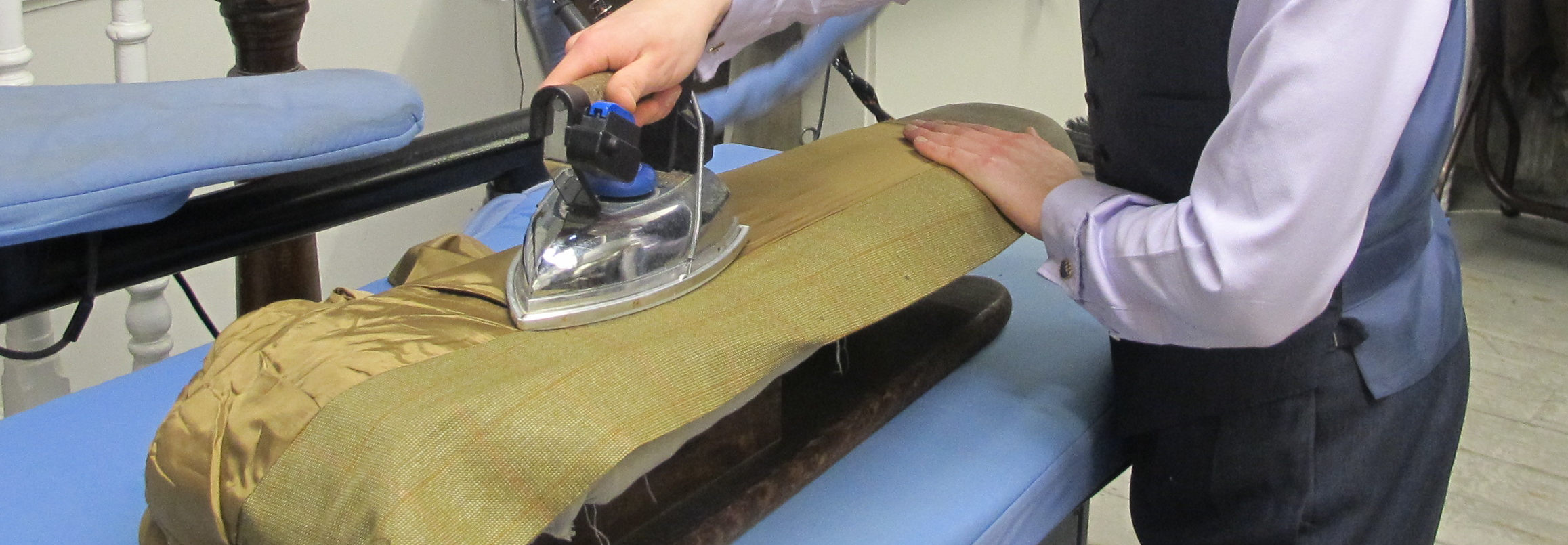
The advice you may need to iron anything should be within a topic below:
There's will never be an absolutely "right" way to iron but you will get better results if you follow a sensible order.
Pillows, sheets and duvets will often be distorted out of shape so simply straighten them as much as possible and accept that the corners might not meet where you'd like them to be.
If you have a reverse flap in the pillow, that holds the pillow in place, you can turn the pillow case inside out and iron that first to get it absolutely flat.
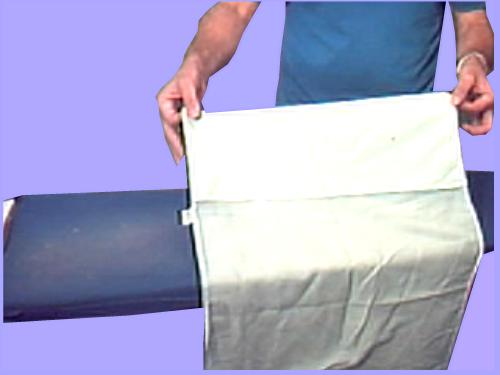
Simply put that section on the board and iron straight from one side to the other, repeating until the flap is done.
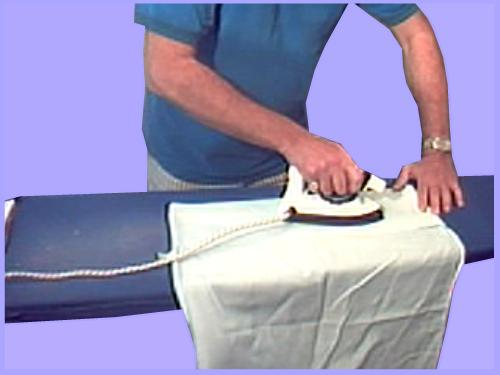
Set the pillow up and use your hands and fingers to ease the cloth underneath, including your palms, to check if it's flat all over.
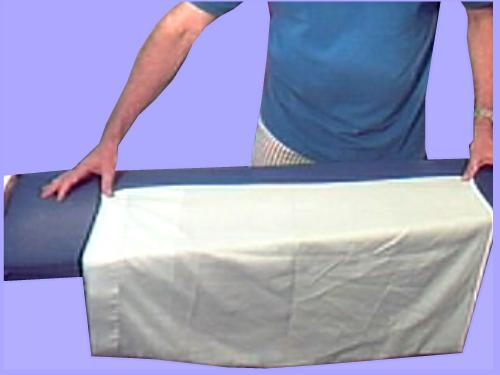
Turn the cover onto its right side and hold the seam stretched and flat on the board.
From that edge smooth the fabric back toward the back edge of the board.
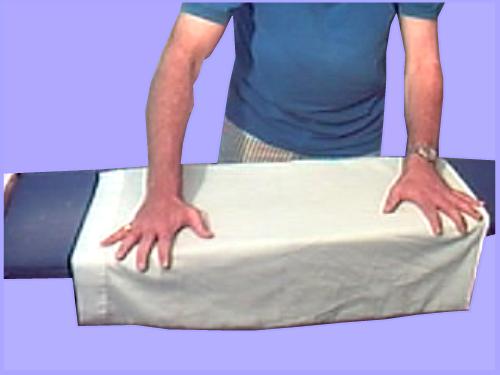

Pull the whole pillow towards you until all of th undone segment is on the board. Iron that portion after making sure it's completely flat through the 2 layers.
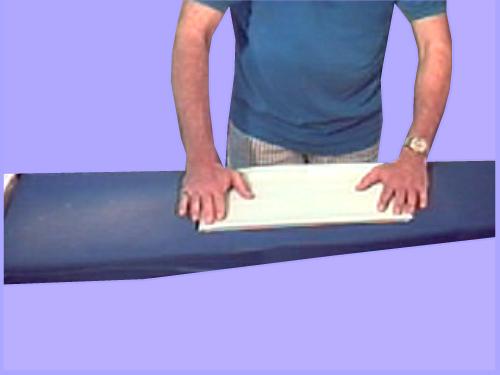
Then fold the pillow in half again and iron once flat. Flip the pillow case over and iron once more.
That finishes the pillow case.
Sheets are completely flat so ironing them is probably the easiest ironing you'll do. They give you great practice at smoothing out two or more layers of fabric at a time and this would help you with other, more difficult, items.
Of course, this doesn't take into account fitted sheets, which it's almost impossible to keep flat because of the elastic pulling the corner together.
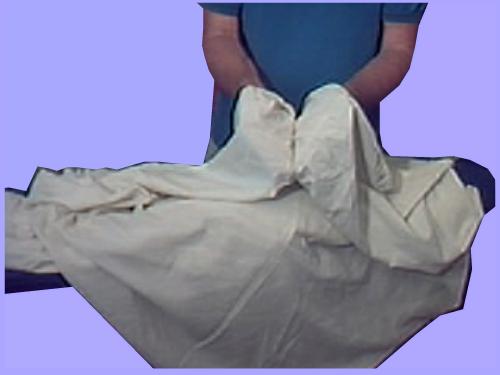
Fitted sheets cause problems solely because of the shape of the corners. Start by matching two corners together and folding one over the other, so you have a corner with two layers of fabric. Try to match, as much as you can, the seasm of one corner with the other.
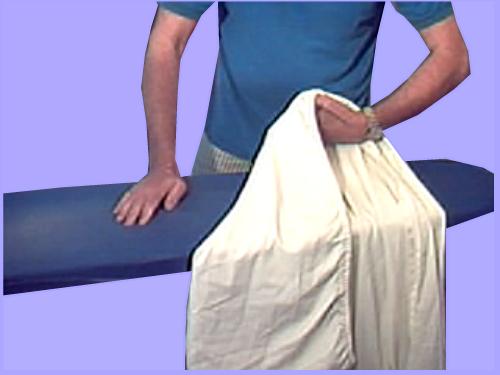
Put the corner over the edge of the board and stretch the elastic, holding it down with one hand and using the corner to hold the it tight on the board..
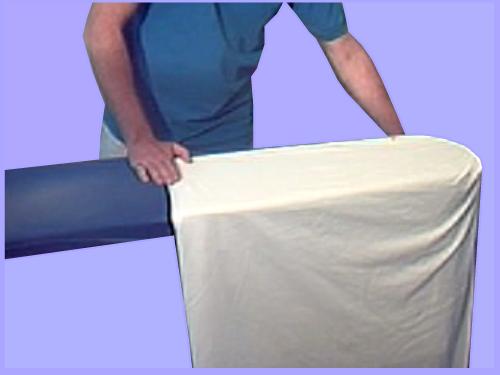
Change the hand holding the end of the sheet tight and pick up the iron while still holding the stretched sheet tight. Get the iron and place it on the sheet, replacing the other hand and keeping the sheet tight, then iron that corner.
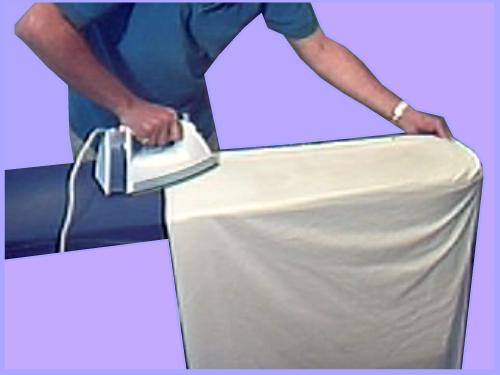
Once you've done that corner pull the sheet towards you, firstly doing the top of the corner and then moving on to the main body of the sheet. As this is now flat all you need do is make sure both layers are flat and even and then iron the portion.
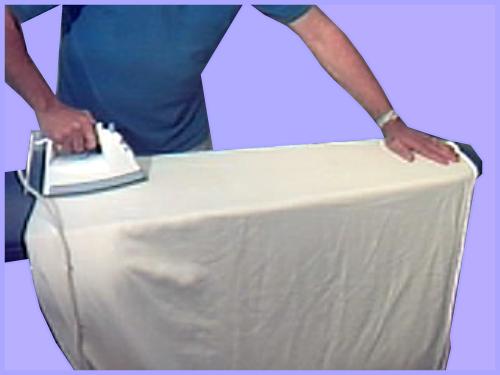
Move on to the next section and iron again until you get to the opposite corner and then repeat the above procedure.
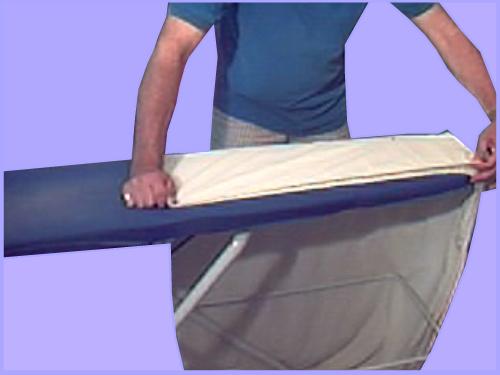
The final maneuver to master is once you have finished that side. Leave the corner you've just done on the board and pick up the other corner, fitting it over the one on the board so that you halve the sheet. Now hold the sheet on the center section where the fabric folds over and flip the sheet onto the board. Start flattening the sheet from the from the center to the edges and back to the corners, ironing when you have it flat and moving the sheet towards you at every change of section.

Fold the sheet again at the center section to halve it again. Pull the side towards you as you did with the previous section.
Do the opposite side and then fold the sheet down to finish.
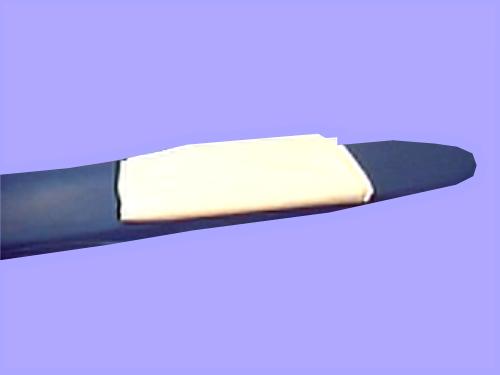
One problem you will have is that the fabric is often distorted from its original shape. Accept the fact if it is distorted and don't try to get it perfectly square, you'll just waste lots of time and in the end you still won't have a square duvet.
Start at the top end of the duvet, the part closest to your face when on the bed. Halve it making sure the right side is on the outside (the right side being the one you would show uppermost on the bed).
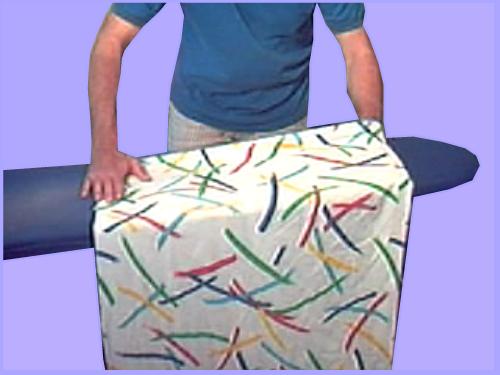
Make sure the material is flat, stretching the layers by putting you hand and arm in the center and pulling against your other hand. DO NOT iron until all layers are flat
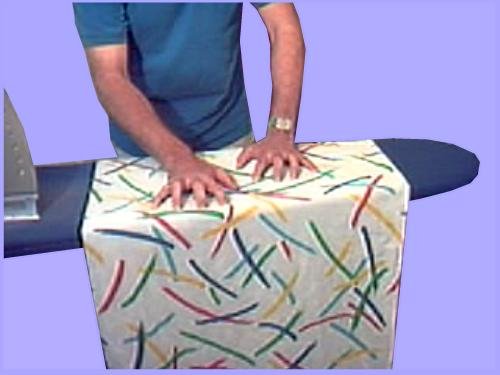
The easiest way to flatten the fabric is to use the tips of your fingers to roll any creases over the back edge of the board..
Here you can see a roll being pushed over the edge.
Do it again and again until all the material is flat. Push sideways as well and over time you'll get used to getting layers flat.
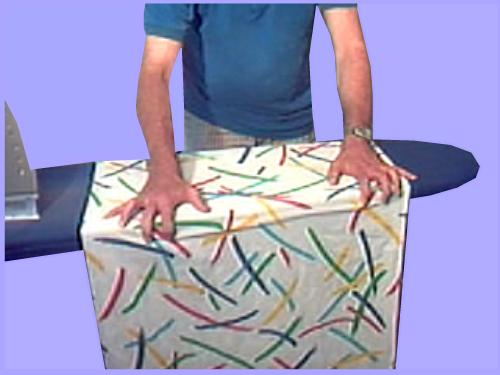
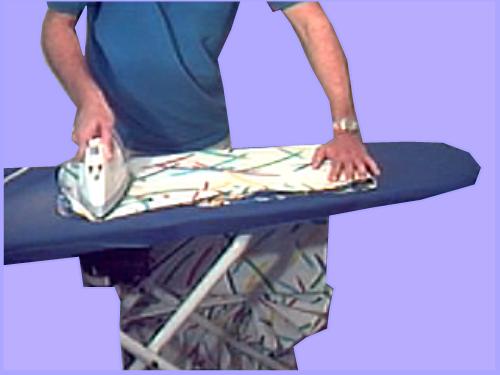
Repeat this section by section until you reach the bottom of the duvet. Iron with the point into the sections between any buttons or poppers.
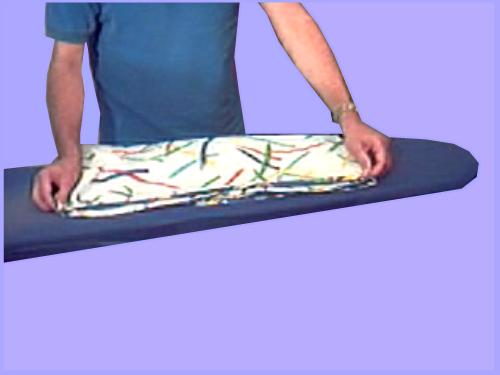
Going over poppers and buttons with the iron can melt or break them so avoid ironing these by going in between them.
Fold the top end up to meet the bottom end so you halve the duvet.
Then grab both ends and shake to see where the middle is. Take the center laying it flat on the board and start smoothing down the material again. Pull it towards you section by section making sure all the layers are flat before you iron. When you come to the end you can either do the same again, folding down to eighths or just flip the whole side over and complete the side you haven't done.
If you fold the duvet down beyond eighths creases will appear where it's folded.

Office:
Pool House
34 Ivinghoe Road
WD23 4SW
|
|
|||